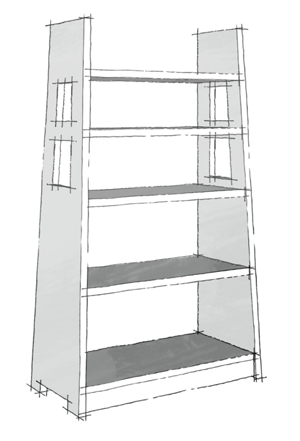We may receive a commission when you use our affiliate links. However, this does not impact our recommendations.

Attractive and functional in its own right, the No. 346 Magazine Stand also provides a good introduction to working with the trapezoidal forms of Limbert’s more sophisticated pieces.
The magazine stand is one of the signature pieces of the American Arts and Crafts movement, and Charles Limbert’s No. 346 is an especially distinctive take on the form. Two details mark the No. 346 as a Limbert design—the cutouts on the sides and the trapezoidal base. In the spirit of “I Can Do That” projects, I’ve modified Limbert’s design in two ways:
- Shortened the depth to use 1 x 12 dimensional stock
- Used pocket hole screws to join the shelves and kick to the sides.
These changes simplify construction and take advantage of wide dimensional lumber to avoid glue ups.
In later posts, I’ll step through construction and finishing, but you can get a head start by downloading the shop drawings and part list here.
— Michael Crow
The above is from the author of “Building Classic Arts & Crafts Furniture: Shop Drawings for 33 Traditional Charles Limbert Projects” (available in both print and digital at ShopWoodworking.com); the piece is a simplified version of the one that he presents in the book.
Here are some supplies and tools we find essential in our everyday work around the shop. We may receive a commission from sales referred by our links; however, we have carefully selected these products for their usefulness and quality.









If you look at magazine stands from different makers, you’ll see different joinery techniques used to link sides and shelves, including screws through the sides with the holes covered by buttons, dadoes, wedged through tenons, and tusked through tenons.
Joinery decisions are going to depend on your tool set, capabilities, and desires. The pocket holes suggested here follow the “I Can Do That” philosophy of easy joinery executed with a limited toolset. They’re also useful in a production environment. The original version looks like it uses dadoes to join the shelves and sides and either blind screws or tenons for the kick. If you want to practice tenons and through tenons, you certainly could use them here, but the 3 degree slope is going to complicate those through tenons.
Michael (and anyone else who cares to answer),
Is it legitimate to use through tenons for the shelves and stopped tenons for the kick?